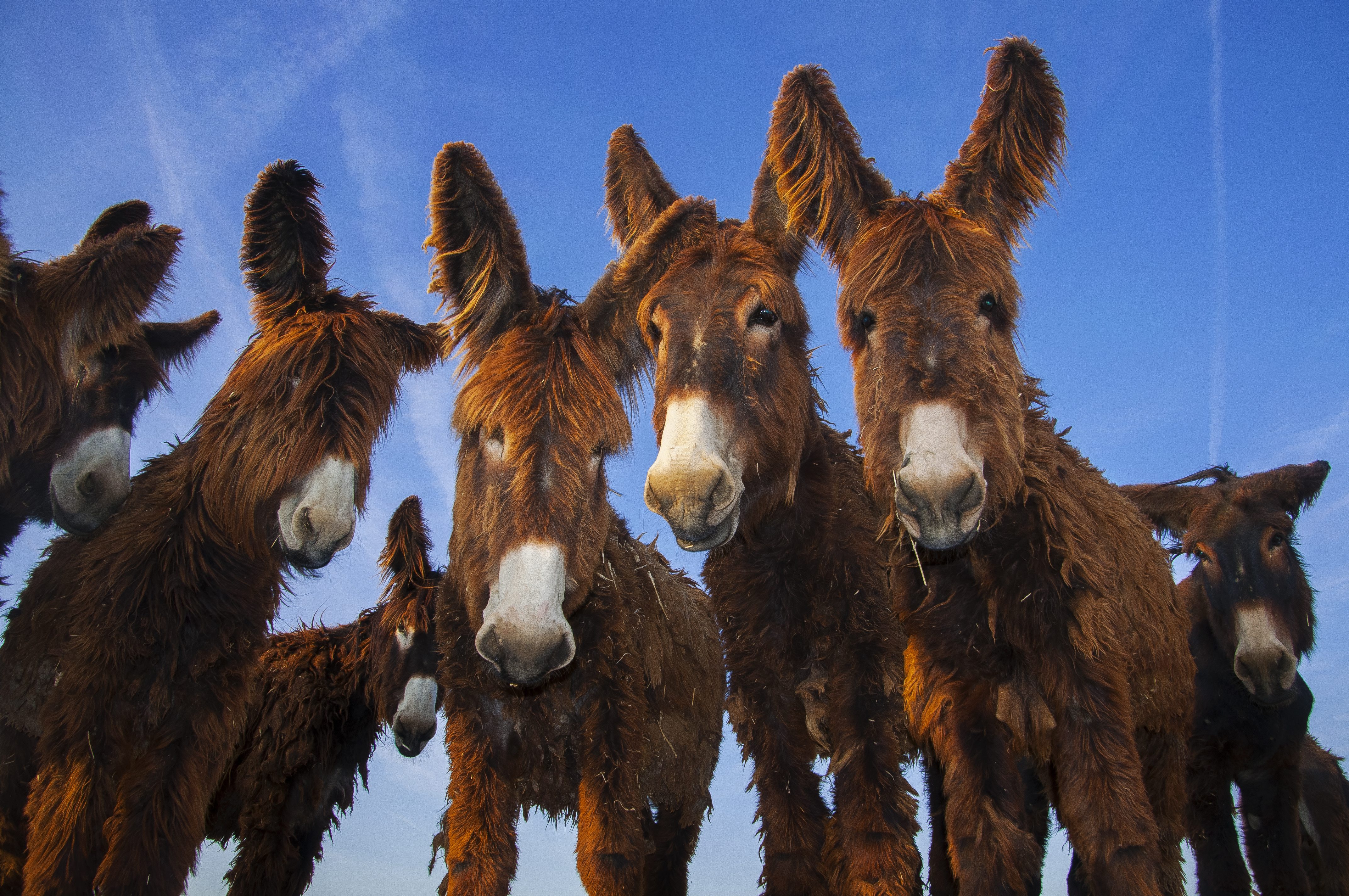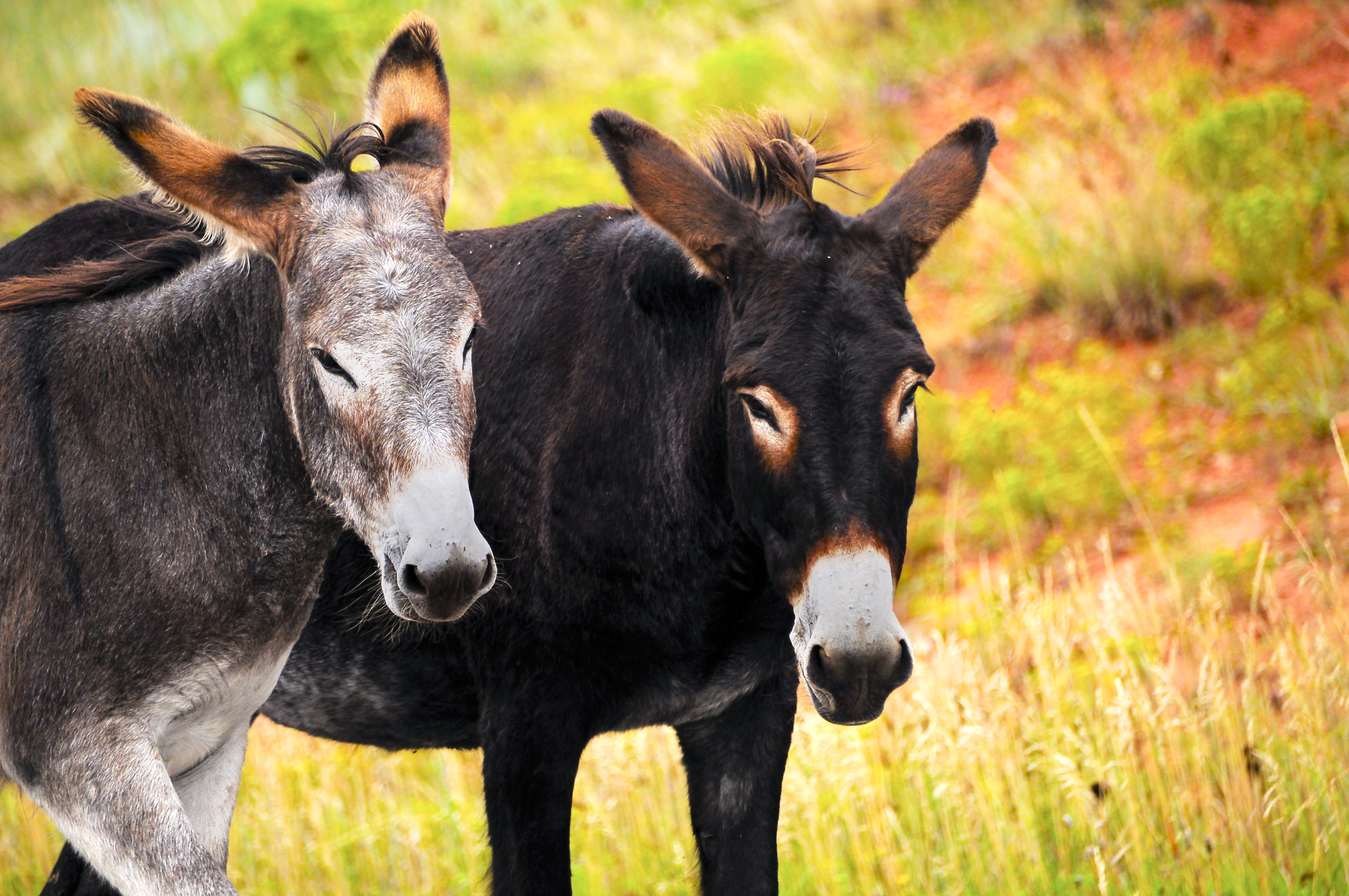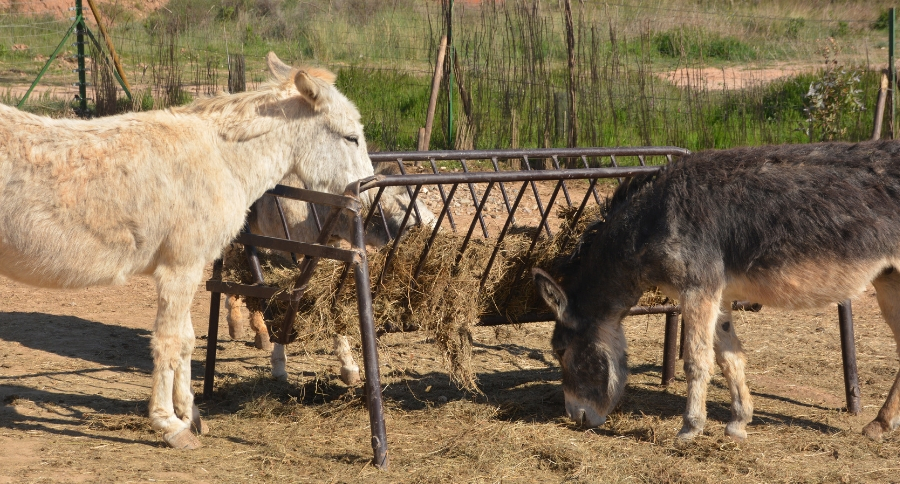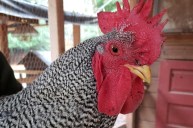Long, floppy ears are one of the hundreds of traits that make the burro irresistible. The burro, or donkey, is a domesticated member of the horse family and has been used as a working animal for at least 5,000 years. With more than 40 million donkeys in the world, it's worth knowing a little more about their personalities and origin.
The U.S. Department of the Interior's Bureau of Land Management shares that, in the the United States, "burro" is used colloquially by English speakers to describe a small donkey used mostly as a pack animal. It also describes the feral donkeys that live in Arizona, California, Oregon, Utah, Texas, and Nevada.
All that, and did you know that they don't get the respect they deserve? They really do have a bad reputation for no reason at all. According to CNN,
"Burros, as the Spanish call them, walk at about a human's foot speed. They rarely kick or bite. They seem to have a calming effect on horses and humans. And they don't get nearly the respect they deserve, the Rodney Dangerfields of the animal kingdom."
Here are five facts that you probably didn't know about this adorable pack animal.
1. Burros are highly intelligent.

These pack animals are known for being stubborn, but are highly intelligent and eager to learn. As many came to realize during the Gold Rush in the mid-1800s, once you earn their confidence, they are very willing to work hard for you.
2. They stand their ground.
In the lower Colorado desert, wild burros share this habitat with desert bighorn sheep and desert mule deer. Burros evolved in the harsh deserts of North Africa and adapted very well to the Colorado Havasu HMA's desert environment. Left alone in this remote region with few natural predators, the wild burro population thrived.
These wild donkeys are being managed by the Bureau of Land Management (BLM) as they forage on native plants throughout the region. The BLM writes in-depth about their burro care and population. If you're interested in adopting a wild burro, especially given their calming effect on other animals, the BLM says they can make great companion pets. Sign us up for a small donkey, please!
3) They forage and graze throughout the day.

In their native arid and semi-arid climates, donkeys spend more than half of each day foraging and feeding.
They function best when allowed to consume small amounts of food over long periods like 6 to 7 hours of grazing per day on average dry land pasture. If they are worked long hours or do not have access to pasture, they will require hay or a similar dried forage, with no more than a 1:4 ratio of legumes to grass.
4. The smaller the burro, the better!

A small donkey can be mistaken for a small horse and their average weight varies.
The body weight can range from 80 to 480 kg (180 to 1,060 lb), while their height ranges from 7.3 to 15.3 hands (31 to 63 inches, 79 to 160 cm).
5. They were first introduced in the 1500s.
https://www.instagram.com/p/Bpzws6bAZ9Q/
"Donkeys are believed to have been first domesticated about 5,000 years ago in Egypt or the Middle East. Their existing wild relative, the African wild ass, currently inhabits the dry lands of the Horn of Africa. Introduced to America by the Spaniards in the 1500s, burros became a pack animal of choice for missionaries and miners," according to The National Parks Conservation Association.
Fast forward to the 19th century, donkeys were documented as present in what today is Arizona in 1679. By the Gold Rush years of the 19th century, the burro was the top choice of early prospectors in the western United States. Many of them escaped or were abandoned, and a feral burro population reestablished itself.
However, for all of their positive benefits, wild donkeys or wild burros can cause problems to the environment. These native animals are considered an invasive species in some national parks throughout the country, and some burros in problematic regions are sent to animal sanctuaries where they live out their senior years.
We had to learn more about the retirement centers available for burros so we spent some time on the Wild Burro Rescue Rescue and Preservation Project's site. This sanctuary resides in California and home to many wild burros. There is an article from the National Park Service on their site that talks about the work they're doing for these animals as they need our protection.
Do you care for a burro? Did we miss anything in our list of facts? Show us some donkey love in the comments below!
WATCH NOW: Donkeys Make Great Therapy Animals





